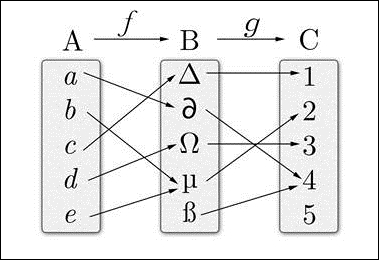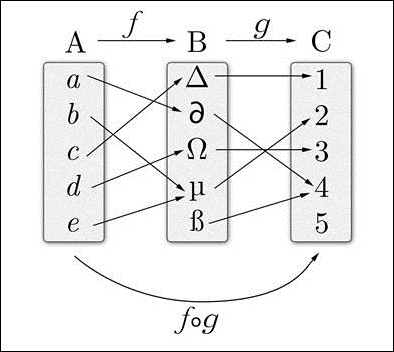Thomas Watson was famously quoted as saying, "I think there is a world market for maybe five computers". That was in 1948. Back then, everybody knew that computers would only be used for two things: math and engineering. Not even the biggest minds in tech could predict that, one day, computers would be able to translate Spanish to English, or simulate entire weather systems. At the time, the fastest machine was IBM's SSEC, clocking in at 50 multiplications per second, the display terminal wasn't due until 15 years later and multiple-processing meant multiple user terminals sharing a single processor. The transistor changed everything, but tech's visionaries still missed the mark. Ken Olson made another famously foolish prediction when, in 1977, he said "There is no reason anyone would want a computer in their home".
It seams obvious to us now that computers are not just for scientists and engineers, but that's hindsight. The idea that machines can do more than just math was anything but intuitive 70 years ago. Watson didn't just fail to realize how computers could transform a society, he failed to realize the transformative and evolving powers of mathematics.
But the potential of computers and math was not lost on everybody. John McCarthy invented Lisp in 1958, a revolutionary algorithm-based language that ushered in a new era in computing. Since its inception, Lisp was instrumental in the idea of using abstraction layers—compilers, interpreters, virtualization—to push forward the progression of computers from hardcore math machines to what they are today.
From Lisp came Scheme, a direct ancestor of JavaScript. Now that brings us full circle. If computers are, at their core, machines that just do math, then it stands to reason that a math-based programming paradigm would excel.
The term "math" is being used here not to describe the "number crunching" that computers can obviously do, but to describe discrete mathematics: the study of discrete, mathematical structures such as statements in logic or the instructions of a computer language. By treating code as a discrete mathematical structure, we can apply concepts and ideas in math to it. This is what has made functional programming so instrumental in artificial intelligence, graph search, pattern recognition and other big challenges in computer science.
In this chapter, we will experiment with some of these concepts and their applications in everyday programming challenges. They will include:
- Category theory
- Morphisms
- Functors
- Maybes
- Promises
- Lenses
- Function composition
With these concepts, we'll be able to write entire libraries and APIs very easily and safely. And we'll go from explaining category theory to formally implementing it in JavaScript.
Category theory is the theoretical concept that empowers function composition. Category theory and function composition go together like engine displacement and horsepower, like NASA and the space shuttle, like good beer and a mug to pour it in. Basically, you can't have one without the other.
Category theory really isn't too difficult a concept. Its place in math is large enough to fill up an entire graduate-level college course, but its place in computer programming can be summed up quite easily.
Einstein once said, "If you can't explain it to a 6-year-old, you don't know it yourself". Thus, in the spirit of explaining it to a 6-year-old, category theory is just connecting the dots. Although it may be grossly over-simplifying category theory, it does do a good job of explaining what we need to know in a straightforward manner.
First you'll need to know some terminology. Categories are just sets with the same type. In JavaScript, they're arrays or objects that contain variables that are explicitly declared as numbers, strings, Booleans, dates, nodes, and so on. Morphisms are pure functions that, when given a specific set of inputs, always return the same output. Homomorphic operations are restricted to a single category, while polymorphic operations can operate on multiple categories. For example, the homomorphic function multiplication only works on numbers, but the polymorphic function addition can work on strings too.

The following diagram shows three categories—A, B, and C—and two morphisms—ƒ and ɡ.
Category theory tells us that, when we have two morphisms where the category of the first one is the expected input of the other, then they can be composed to the following:

The ƒ o g symbol is the composition of morphisms ƒ and g. Now we can just connect the dots.

Let's connect some dots. Categories contain two things:
- Objects (in JavaScript, types).
- Morphisms (in JavaScript, pure functions that only work on types).
These are the terms given to category theory by mathematicians, so there is some unfortunate nomenclature overloading with our JavaScript terminology. Objects in category theory are more like variables with an explicit data type and not collections of properties and values like in the JavaScript definition of objects. Morphisms are just pure functions that use those types.
So applying the idea of category theory to JavaScript is pretty easy. Using category theory in JavaScript means working with one certain data type per category. Data types are numbers, strings, arrays, dates, objects, Booleans, and so on. But, with no strict type system in JavaScript, things can go awry. So we'll have to implement our own method of ensuring that the data is correct.
There are four primitive data types in JavaScript: numbers, strings, Booleans, and functions. We can create type safety functions that either return the variable or throw an error. This fulfils the object axiom of categories.
var str = function(s) {
if (typeof s === "string") {
return s;
}
else {
throw new TypeError("Error: String expected, " + typeof s + " given.");
}
}
var num = function(n) {
if (typeof n === "number") {
return n;
}
else {
throw new TypeError("Error: Number expected, " + typeof n + " given.");
}
}
var bool = function(b) {
if (typeof b === "boolean") {
return b;
}
else {
throw new TypeError("Error: Boolean expected, " + typeof b + " given.");
}
}
var func = function(f) {
if (typeof f === "function") {
return f;
}
else {
throw new TypeError("Error: Function expected, " + typeof f + " given.");
}
}However, there's a lot of repeated code here and that isn't very functional. Instead, we can create a function that returns another function that is the type safety function.
var typeOf = function(type) {
return function(x) {
if (typeof x === type) {
return x;
}
else {
throw new TypeError("Error: "+type+" expected, "+typeof x+" given.");
}
}
}
var str = typeOf('string'),
num = typeOf('number'),
func = typeOf('function'),
bool = typeOf('boolean'),Now, we can use them to ensure that our functions behave as expected.
// unprotected method:
var x = '24';
x + 1; // will return '241', not 25
// protected method
// plusplus :: Int -> Int
function plusplus(n) {
return num(n) + 1;
}
plusplus(x); // throws error, preferred over unexpected outputLet's look at a meatier example. If we want to check the length of a Unix timestamp that is returned by the JavaScript function Date.parse(), not as a string but as a number, then we'll have to use our str() function.
// timestampLength :: String -> Int
function timestampLength(t) { return num(str(t).length); }
timestampLength(Date.parse('12/31/1999')); // throws error
timestampLength(Date.parse('12/31/1999')
.toString()); // returns 12Functions like this that explicitly transform one type to another (or to the same type) are called morphisms. This fulfils the morphism axiom of category theory. These forced type declarations via the type safety functions and the morphisms that use them are everything we need to represent the notion of a category in JavaScript.
There's one other important data type: objects.
var obj = typeOf('object'),
obj(123); // throws error
obj({x:'a'}); // returns {x:'a'}However, objects are different. They can be inherited. Everything that is not a primitive—numbers, strings, Booleans, and functions—is an object, including arrays, dates, elements, and more.
There's no way to know what type of object something is, as in to know what sub-type a JavaScript 'object' is, from the typeof keyword, so we'll have to improvise. Objects have a toString() function that we can hijack for this purpose.
var obj = function(o) {
if (Object.prototype.toString.call(o)==="[object Object]") {
return o;
}
else {
throw new TypeError("Error: Object expected, something else given.");
}
}Again, with all the objects out there, we should implement some code re-use.
var objectTypeOf = function(name) {
return function(o) {
if (Object.prototype.toString.call(o) === "[object "+name+"]") {
return o;
}
else {
throw new TypeError("Error: '+name+' expected, something else given.");
}
}
}
var obj = objectTypeOf('Object'),
var arr = objectTypeOf('Array'),
var date = objectTypeOf('Date'),
var div = objectTypeOf('HTMLDivElement'),